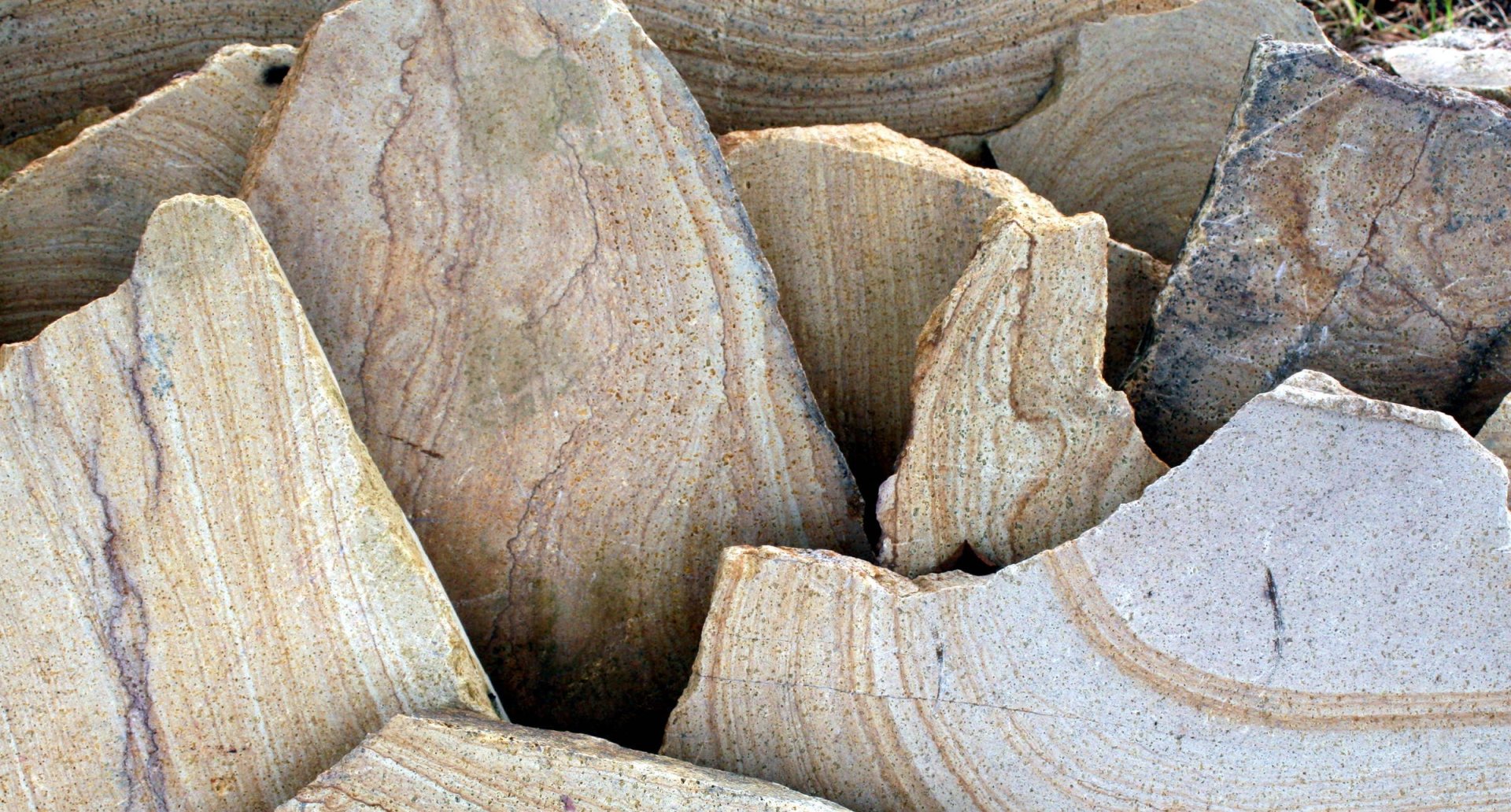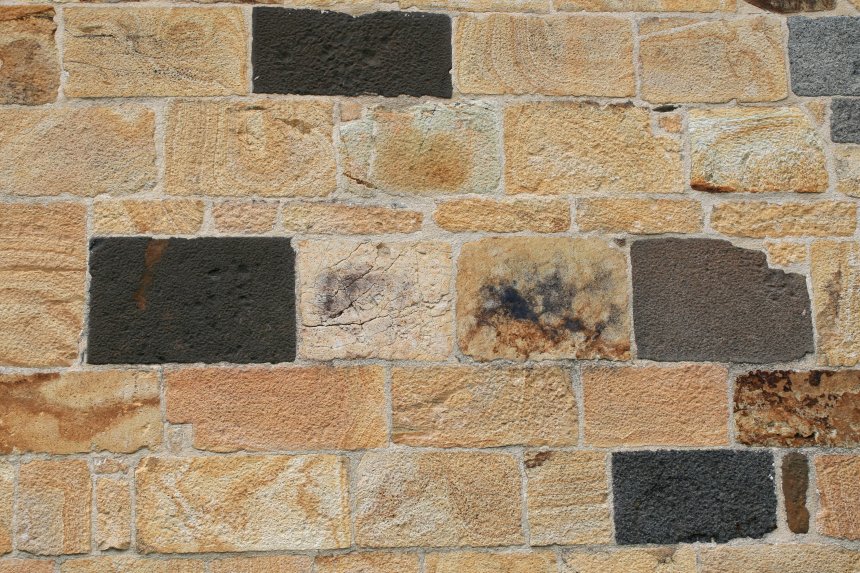Stone : microgranodiorite
Type : microcrystalline magmatic rock
Age : between 330 and 310 million years
Quarry : Le Roz, Logonna-Daoulas (Finistère)
Iron Oxide Rings
This rock displays beautiful concentric rings of iron oxides. The iron comes from the leaching of certain minerals. This underground weathering process took place when the climate was warmer and more humid than it is today. Such climatic conditions accelerate the chemical breakdown of rocks. It’s worth noting that the fresh rock was light gray in color.
A Local Star
Logonna stone was primarily quarried at the Roz site between the 16th and 20th centuries. Its proximity to the Brest harbor was a key asset for exporting the material by sea. It was widely used in construction. Its presence is notable in the civil and religious architecture of many towns and villages in the region: Landerneau, Le Faou, Daoulas, Logonna-Daoulas, Brest, etc. Roz stone was often paired with kersantite.
End of the Quarry
The Roz quarry, opened in 1975, operated for 30 years. Today, a company reuses the quarry’s extraction residues. This rock seems to have fallen out of fashion and now occupies a small niche market. Extractive activity is subject to strict regulations set by the state. Opening a quarry is a complex affair. Quarry operators must regularly renew their "extraction permits" to continue working with the material.
A Mix of Two Magmas
Microgranodiorite is a magmatic dike rock composed of quartz, feldspars, and micas. Its grains are usually very fine, but it occasionally contains coarser quartz. In a recent study (2021), geologists concluded that it originates from a mixture of two different magmas: one derived from the melting of the continental crust, and the other from the mantle. This second magma is also thought to be the source of its geological cousin, kersantite (see installation 13).

